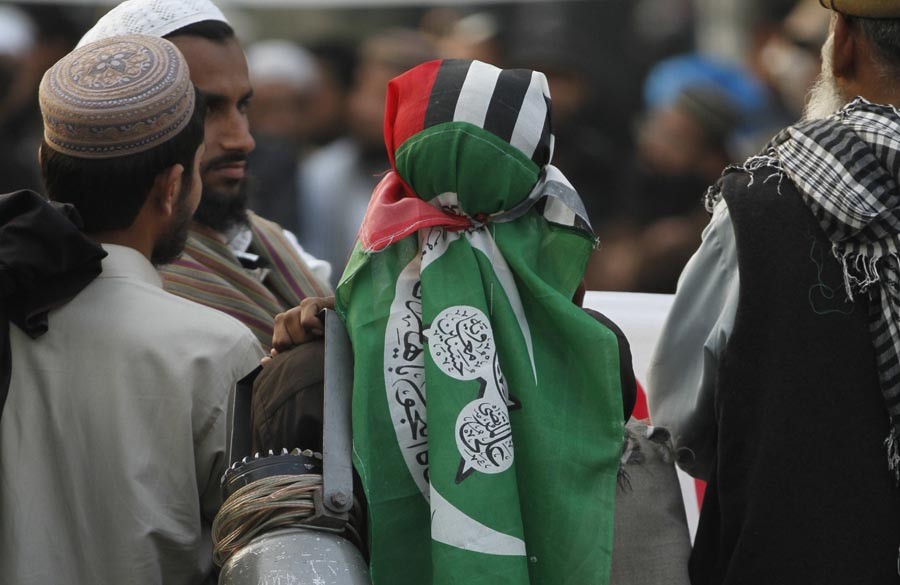
Literacy, printing press and loud speaker

Islam’s interface with modernity is a subject of close reflection and scrutiny by scholars and academics for long. It indeed is very interesting to cast an analytical gaze on the transition that Islam underwent from 19th century onwards.
Despite the aura of universalism attributed to this religious idea (Islam), its changing character with the passage of time is an irrefutable fact. In simpler terms, Islam as an idea as well as in practice was not always the same as it is in contemporary times. In South Asia, religious ideology was mediated through the pluralistic ethos emanating from the Empire system and mystic (Sufi) Orders. Oral methods had been the source through which the religious experience was articulated.
With the advent of modernity, largely through British colonialism, both of these mediatory agencies faced erosion. Rationality became the cognitive tool and also the measure of ascertaining ‘truth’ and ‘reality’. One may aver that conceptions like ‘truth’ and ‘reality’ were changed during the phase of transition from medieval to modern age. The truth, as it came to be perceived in the modern (rational) era, was embedded in materiality.
Quite conversely, the medieval sensibility regarding ‘truth’ was steeped in the esoteric experience of the Sufi, Sadhus and mystics. Oral tradition, the fundamental source of articulating spiritual/mystic experience with the human memory acting as the cardinal instrument for preserving and transmitting knowledge, faced gradual but steady obliteration.
Obviously, the dispensation with the Empire system and mystic Orders and networks as its key determinants, and its attendant representation of the truth could not stand the test of rationality.
Thus the two representations of the ‘truth’ hardly complemented each other. It is important to qualify that slightly loaded statement. All religions of South Asia underwent the ‘representational’ transition, from esoteric to rational.
The rational representation of religious ideology found itself well-entrenched by the last quarter of the 19th century. The question asked on numerous occasions pertains to the essence that constituted and then consolidated modern Islam. I thought hard and came up with the three pronged answer. Literacy, printing press and loud speaker are the main constituents of modern representation of Islam. The irony is that all three were introduced here by the British.
The three ‘Rs’ changed the social reality in its entirety. Reading, writing and arithmetic (three ‘Rs’) played the most pivotal role in bringing about the transition. The numerical strength of literati substantially increased and coming of the printing press spurred religious clerics into action. Missionaries started publishing religious texts, tracts and pamphlets.
That practice then was adopted by clerics representing other religions. Arya Samaj, a Hindu reformist organisation, was particularly zealous in treading that modernist path. Muslims and Sikhs followed suit. The point that is worth making is the centrality that text acquired in religious discourse; along with literacy, printing press was a significant factor. Through literacy and printing press, the remit of the ulema expanded exponentially. Fatawa, Malfuzat and books about hagiographical literature were churned out in abundance. These were followed by tracts and pamphlets, and subsequently newspapers which more often treaded a communal line.
When that point was being debated among friends, fellow academic Hussain Ahmad Khan made an interesting intervention. Referring to Queen (Victoria) as the centre of the British Empire, he asserted that Muslims (of the South Asia) started considering Hijaz as a centre for themselves. Thus the centrality accorded to Hijaz was like simulation of the structure that British Empire inhabited. But this begged another question. Was Hijaz as important for the adherents to the Shia sect as it was for the Sunnis? One should bear in mind that with ascendancy of modernity, exclusion on the basis of religion emerged as a social bane.
Loud Speaker was yet another factor which enhanced the power of the clerics. In an environment punctuated with rancour and religious protest, particularly after the Khilafat movement, loud speaker came in handy for the ulema to reach out to the wider public. More importantly, through loud speaker, the character of mosque was also changed. In medieval times, mosque was a site for religious prayer and spiritual deliberation. It was not meant exclusively for ritual performance. Thus the difference between dargah and mosque was quite unidentifiable. Loud speaker was employed by the maulvis to be heard and, once that instrument was installed in mosques, they used it with profusion so that they were heard for long enough and were socially counted.
The acoustics gave the mosque and maulvi an identity which was the product of modernism. The agitational politics gave loud speaker more currency from 1930s onwards.
While this discussion was throwing up such nuanced ideas and inferences, someone brought up the role of the railways in spreading out the appeal of modernist Islam. That too is a point which cannot be ruled out. Ata Ullah Shah Bokhari is known to have said that half of his active life was spent in jail and the other half in the train. Railway was something that even a person as staunchly anti-modern as Gandhi could not do without. It made mobility between various regions of the subcontinent not only possible but at times a necessity. People sought employment in other regions and railway was the way for them to move from homes to workplaces.
Besides, railway was an extraordinary source to forge connections. It not only helped to produce Indian nationalism, but Muslims from different cultural, social and ethnic stripes were gelled into one ‘nation’ because of it.
The point was very well-taken. Thus railway also was an important constituent of Modernist Islam. But the fact remains that Islam, the way we understand and practice it today, is a phenomenon which is not only different from its medieval variant but essentially modern in its form.